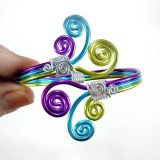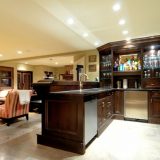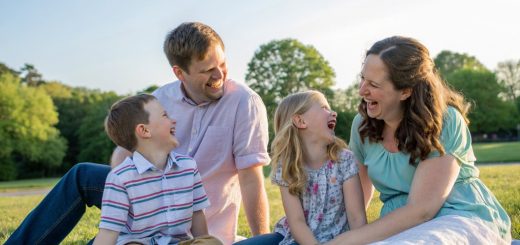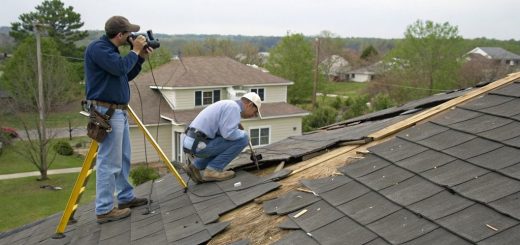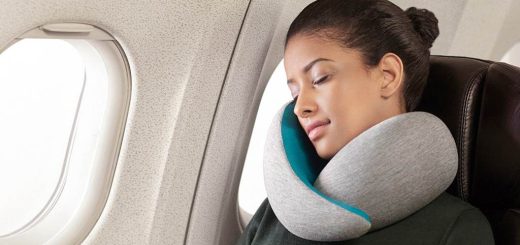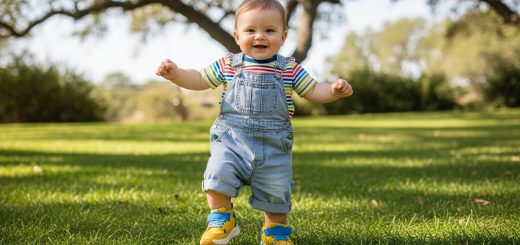How to Choose A Professional Backdrop Stand for Wedding Photography?
A backdrop stand is an essential piece of equipment for any wedding photographer. With the right backdrop stand, you can create beautiful portraits and group photos that make your clients look their best on their special day. However, with so many options on the market, it can be tricky to determine which stand is best for your needs.
In this comprehensive guide, we will walk you through everything you need to know to find the ideal professional backdrop stand for wedding photography.
Why Backdrops Are Important for Wedding Photography
Backdrops serve several key purposes for wedding photographers:
Provide a Consistent Background
Having a backdrop gives you a clean, consistent background for portraits and group shots. This prevents distracting backgrounds from impacting your photos. The backdrop helps the subjects pop against a neutral or complementary color.
Allow Control Over Lighting
With a backdrop stand, you can position strobes, reflectors, and other lighting tools to illuminate your subjects perfectly. The backdrop cuts out uncontrolled natural light that can cause harsh shadows or unflattering colors.
Help Pose Subjects
Backdrop stands give brides, grooms, and wedding parties a defined area to pose within. This helps you compose shots efficiently and makes directing large groups simpler.
Enable Creativity
Using different colored backdrops or printed photo backdrops allows you to get creative with wedding portraits. You can match colors to the wedding theme or add visual interest.
Provide Portability
Backdrop stands are transportable so you can move them around the wedding venue to photograph the couple and wedding party in different on-site locations.
Add a Professional Touch
A photography backdrop shows clients you have invested in professional gear. This immediately makes you look more legitimate in their eyes.
With these benefits in mind, it’s easy to see why investing in a high-quality backdrop stand should be a top priority for wedding photographers.
Key Features to Look for in Backdrop Stands

Not all backdrop stands are created equal. As you evaluate your options, keep an eye out for these features:
Sturdy, Durable Construction
Since backdrops stands need to be moved frequently and withstand regular use, sturdy metal construction is ideal. Aircraft grade aluminum or steel stands can hold up well for years. Avoid cheap plastic models.
Adjustable Height
Look for stands that allow you to adjust height as needed. Telescoping backdrop poles that extend from 7-9 feet are versatile for both seated and standing portraits.
Portability
Easy transport and set up are essential for wedding photography. Prioritize collapsible stands with protective carry bags. Compact light-weight stands are more portable.
Secure Backdrop Attachment
The stand must have a method to tightly secure the backdrop material, such as spring clamps or velcro. Loose backdrops can sag or blow in the wind.
Maximum Backdrop Width Capacity
Standard stands support 5-10 feet wide backdrops. Make sure to get one wide enough for group portraits. Larger stands can accommodate photo backdrops up to 16 feet wide.
Angle Adjustability
Models look best when the backdrop is angled to avoid shadows. Look for stands with adjustable arms or that pivot to achieve ideal angles.
Load Capacity
Double check that the stand can safely support your heaviest light stands, reflectors and other professional photography gear. Load capacity from 30-150 lbs is common.
Price
Backdrop stands range from $50 for basic portable models up to $500+ for heavy-duty adjustable stands. Set a budget based on your needs and frequency of use.
Reviews
Read third-party reviews to identify stands with excellent ease of use, stability and durability from real customer experience.
By keeping these features and considerations in mind, you’ll be equipped to select a professional photography backdrop stand that aligns with your wedding photography needs and budget.
Types of Backdrop Stands for Wedding Photography
There are a few common types of backdrop stands to choose from:
Spring Backdrops
These feature two adjustable arms with springs that attach to the top corners of the backdrop. The springs hold the backdrop fabric taut. Spring backdrops are lightweight and portable but may not work as well for heavier fabrics.
U Channel Stands
U channel stands have a U shaped channel at the top to insert a crossbar. The backdrop fabric hangs down from the crossbar and can be secured with clamps. This style is less portable but very secure and stable.
Upright/Crossbar Stands
Uprights have vertical poles that attach to horizontal crossbars on top. The backdrop hangs from the crossbars. These stands are heavier but allow height and width adjustments.
Self-Standing Kits
These all-in-one kits include the vertical stand, crossbars, backdrop fabric, and lights. While convenient, you have less flexibility to position lights optimally.
Wall Mounted Rigs
Wall mounts attach backdrop poles directly to a wall or window. This saves space but only works in select indoor venues.
For maximum versatility, portable U channel or upright stands offer the most professional quality results for wedding photography.
Choosing the Best Backdrop Fabrics
The backdrop stand is only part of the equation – you need an appropriate backdrop material as well. Here are some top options for wedding photography:
Muslin
Muslin is a lightweight woven cotton fabric that works beautifully for backdrops. It’s affordable, drapes nicely, and comes in endless colors. Muslin does wrinkle, so be sure to steam it beforehand.
Broadcloth
This tightly woven, matte cotton fabric is thicker than muslin. It does not wrinkle as easily, but is also a bit pricier. Broadcloth works well for simple backdrops.
Velvet
To add elegance for formal wedding portraits, velvet is a fantastic choice. With its luxe look and draping abilities, velvet makes subjects stand out.
Seamless Paper
For solid color backdrops, seamless background paper is convenient and economical. Offered in loads of colors, it tears easily so handle with care.
Printed Fabrics
Choose printed cotton, vinyl, or polyester backdrops to complement weddings with a specific color scheme or theme. Floral, geometric, shimmery prints are popular.
Consider stocking a few different fabric backdrop options to suit the style of each wedding shoot. And don’t forget the clamps or velcro to securely attach the fabric to your stand.
Professional Backdrop Stand Recommendations

Now that you know what to look for in backdrop stands for wedding photography, here are some of the top-rated professional options:
Fotodiox Pro Collapsible Backdrop Stand
- Extremely sturdy steel and aluminum construction
- Supports backdrops up to 10 feet wide
- Adjustable height from 6.5 to 9 feet
- Convenient collapsible design
- Can support 150 lbs of gear
- Carrying case included
Neewer Adjustable Background Support System
- Stable crossbar and upright stand combo
- Steel poles extend from 7.5 to 9.5 feet tall
- Holds backdrops up to 9 feet wide
- Affordable price point around $100
- Supports 66 lbs of equipment
- Portable with carrying bag
Julius Studio Heavy Duty Backdrop Stand
- Free standing design is super stable
- Withstands up to 110 lbs of gear
- Adjusts height from 6.5 to 10 feet
- Fits backdrops up to 10 feet wide
- Easy to transport and assemble
- Carry bag included
LimoStudio Photo Video Studio Adjustable Muslin Backdrop Stand
- Complete portable kit with muslin backdrop
- Height adjusts from 6.5 to 8.5 feet
- Holds backdrops up to 9.8 feet wide
- Weighted sandbags provide stability
- Lower budget option under $150
ePhoto Background Support System with Carrying Case
- Aluminum alloy construction
- Extends from 5 to 7.8 feet tall
- Holds up to 11 feet wide backdrops
- Spring arm design is lightweight
- Affordable price under $50
- Convenient carrying bag
Any of these professional stands would make a solid choice for wedding and portrait photography. We recommend splurging on a high-quality stand that will provide stability and durability for years to come. Don’t underestimate how large of a backdrop you may need for group wedding photos.
Setting Up Backdrops On Location/
Once you’ve selected the right backdrop stand, a few tips will help you set it up flawlessly at wedding photo shoot locations:
Ensure Sturdy Ground Surface
- Place on level, hard surfaces – uneven ground can topple stands
- Concrete, asphalt, wood floors, or turf work well
- Avoid soft soil or sand
Use Guy Wires for Outdoor Stability
- In outdoor windy settings, secure guide wires to stakes in the ground
- Attach wires to backdrop stand legs to keep stand firmly in place
Add Weight for Extra Stability
- Weigh down the stand legs with sandbags or dumbbells
- This prevents tipping and swaying in gusts of wind
Adjust Height Appropriately
- Place stand at right height for photo composition
- Use taller heights for standing portraits and lower for seating
- Leave room to position lights above and around stand
Position Backdrop at Flattering Angle
- Tilt the backdrop so it’s not parallel to the subject
- Angling minimizes shadows behind subject for better lighting
Allow Space for Photographer Movement
- Leave enough space to walk around the stand
- This allows you to shoot from different angles and spots
Use Assistants for Large Setups
- For extra wide/tall stands, use assistants to set it up
- Prevent damage and accidents when assembling big units
Check for Wrinkles in Backdrop
- Any ripples or creases will show in images
- Tightly clip fabric to crossbars to keep it smooth
- Steam backdrop beforehand if needed to remove wrinkles
With this checklist, you’ll be ready to easily transport, assemble and position your photography backdrop on location for fantastic wedding photos.
5 Key Tips for Shooting with Backdrops

Setting up your backdrop properly is crucial, but you’ll also need photography skills to use it effectively:
Position Subject Off the Backdrop
- Place subject at least 2-3 feet in front of backdrop
- This creates separation with attractive out of focus bokeh
Make Sure Subject Pops Against the Backdrop
- Pick complementary colors for flattering contrast
- Eg – dark backdrop for subject in white or light gray
Use Shallow Depth of Field
-shoot portraits with wide apertures like f/2.8 or f/4
- This makes backdrop nicely blurred for emphasis on subject
Light the Backdrop Separately from Subject
- Use one light on backdrop, one on subject for optimal exposure of each
Add Accent Lights for Dimension
- Position rimlights, hairlights etc to add dimension and highlights
- Aim accent lights towards backdrop for flare or color effects
Mastering these techniques takes practice but leads to professional quality wedding photos your clients will love.
Conclusion
Choosing the right backdrop stand for wedding photography involves considering portability, stability, dimensions, ease of use and budget. Look for sturdy yet adjustable professional stands that will provide a flawless consistent background for portraits and formal photos at weddings. With so many options, read reviews and look for models with durable construction that fits your specific needs. Set aside time to practice using your new backdrop so you can wow clients with polished images on their big day. Your photos will convey a heightened sense of professionalism when you have the right tools.
Frequently Asked Questions
What size backdrop should I get?
For wedding photography, a backdrop stand that fits 8×8 to 8×10 feet backdrops is ideal. This gives you ample room for portraits and fitting in large groups.
How do I prevent backdrop stands from blowing over outside?
Secure guide wires from the top of the stand legs to stakes in the ground. You can also weigh down the legs with sandbags.
Should I get a spring, U channel, or upright style stand?
Upright or U channel stands are the most secure and adjustable options best suited for wedding photography. Spring stands can work as a lightweight portable alternative.
What’s the best material for wedding photography backdrops?
Muslin or broadcloth fabrics are great choices for wedding backdrops. They come in endless colors, provide nice diffusion, and drape beautifully.
Is it better to use a backdrop stand or just a wall?
A professional backdrop stand allows you to move and adjust it as needed. A wall limits you to one spot and may not have an ideal surface. Backdrops offer more flexibility.
What should I look for when buying a used backdrop stand?
Inspect it for rust, damaged joints, frayed fabrics, missing pieces, etc. Extend it fully to test stability. Check that it achieves proper height and width.








